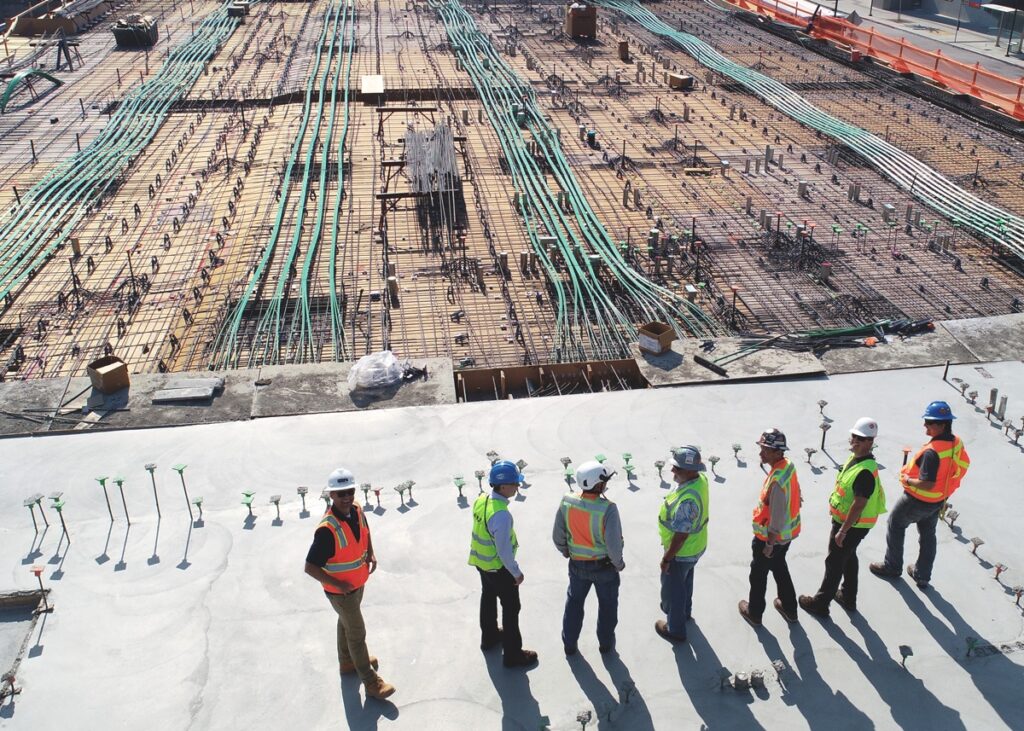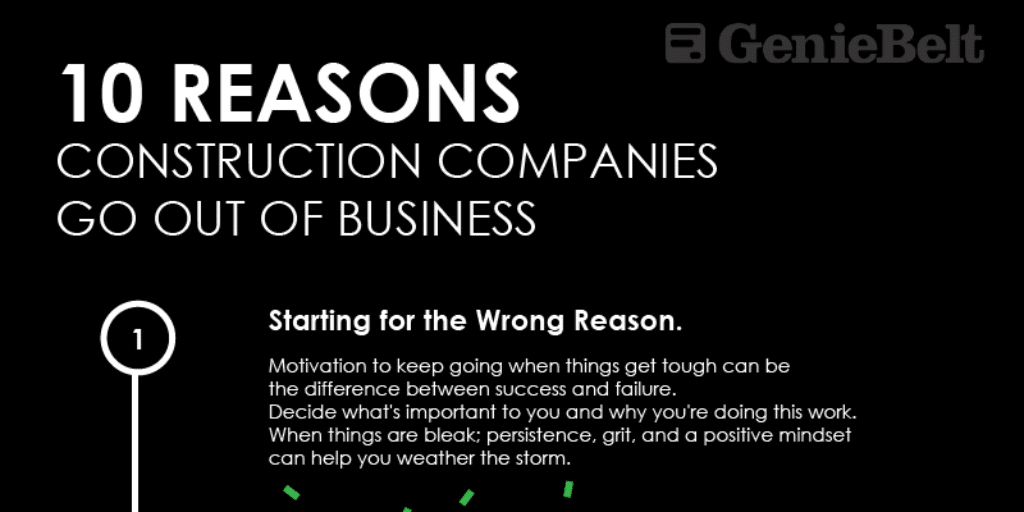Estimate vs. Quote vs. Bid vs. Proposal – What’s The Difference & Why It Is Important?
Working as a professional in the construction industry, you know that a big part of continually being successful is understanding how big of a numbers game it often is. Every penny in every part of the job counts and can add up quickly. Trying to determine the difference between the frequently used terms “estimate”, “quote”, “bid”, and “proposal” can sometimes leave your head spinning.
Because of this, it is crucial to understand these different initial pieces of a new construction project, how they often work together, and how to effectively communicate these offers to your potential customers. In many instances, the numbers you present to a potential client and how clearly you present them, can make or break your opportunity to not only win that project but future projects with them down the road.
It’s crucial to understand the difference between an estimate, quote, bid and proposal while planning your construction projects.
By utilizing the words “estimates”, “quotes”, “proposals”, and “bids” correctly and efficiently, contractors can ensure clear communication and expectations from the very start of a job. But depending on who you talk to, and the current stage of the project, some of these words have different meanings from person to person. These are actually the words with the highest instance of misuse in this industry today.
There are many instances where “quote” and “estimate” may be used interchangeably within your in-house team. The same with the terms “proposal” and “bid”. A bid or proposal may turn into an official client contract, but clarifying these terms with your team and your clients can save huge headaches and hassles moving forward. Neither you the contractor nor the client will want to see unexpected and unaccounted for expenses.
Most importantly, using these terms clearly and consistently can also ensure a crystal-clear bottom line on your end. The more accurately, consistently, and efficiently you start producing project winning proposals the better. Consistency is king!
So let us dive into the widely accepted definitions of these often misunderstood industry terms. Some of these terms are rather flexible in meaning, but when you look at the big picture of each of them in relation to the other it is a lot easier to grasp. Once contractors have a good grasp on utilizing these terms correctly, they can help ensure the seamlessness and success of each and every project. So let find out what the differences are?
Estimate
Let’s start with what exactly estimates are. This will often be the first step in presenting an offer to a potential customer. Estimates will be one of the first calculations done for a project and will always come before putting together a bid or proposal. This is one of the reasons that it is essential to ensure the most accuracy in regards to initial quantity takeoffs. This is the foundation of your estimate, where your numbers will start from, and often what the other forms of offers start as.
Estimate will often be the first step in presenting an offer to a potential customer.
“Mistakes in quantity takeoffs immediately and negatively impact project costs, both in material amounts and durations; next to that, misunderstanding the project’s scope of work can lead to missed or overestimated work,” says Dan Frondorf, owner of civil cost estimating consulting firm DG Frondorf and Associates.
Oftentimes you can utilize an estimate to serve as the initial “ballpark figure” that your client or potential new customer is looking for. This will give everyone involved a rough idea of the total project will cost and a starting point for budgeting. Because of the fluidity of an estimate, one of the biggest pros is they can provide room for negotiation with the customer. If they see an inflated number for the total estimate that includes room for upgrades, they will have less “sticker shock” and you will have more wiggle room.
Overall, estimates are going to be for more of an internal than external purpose. The core pieces of an estimate are the calculation of expected initial costs (this would include materials and labor) and cost of your other overhead (which would include an accounting of taxes, subcontractors, insurance, equipment costs, etc.). The materials costs are taken from the supplier’s quotes. But we’ll get to quotes next.
Estimates are the most flexible and variable forms of offer because of the high probability of unknowns within every project. You can count on 90% of the time, having to adjust costs due to unexpected additional project expenses, like delays from bad weather or necessary repairs not initially visible. Even though there’s some gray area, every estimate you put together should still be as accurate and detailed as possible with the all of the information currently available.
This will ensure all of your offers to potential customers, in any of the four forms, are consistent and accurate across the board. Also, estimates are usually free to clients, with the exception of some contractors who charge for complicated and lengthy meetings to figure up a thorough and accurate estimate. In those instances, time is money.
Quote
Accuracy leads right into the next form of offers which are known as quotes. Quotes are the most spot-on way to present your project offer to potential customers to give them a firm number. Within quotes, the project is clearly and fully defined in scope that is based on concrete and quantifiable data. Inherently these should be a more accurate number than a rough estimate.
Within quotes, the project is clearly and fully defined in scope that is based on concrete and quantifiable data.
Quotes are also what general contractors receive from their suppliers for the initial price of materials for the job. Because quotes are mainly related to materials and labor, they are often only good for a certain specific amount of time because the cost of materials and commodities changes so frequently. After that time has expired, both sides are often in the understanding that the price will more than likely increase when a new quote is put together.
Bid
Bids are another form of offer where accuracy is crucial for a project. These are a precise line by line list of expectations and cost per line item individually. There’s no grey area to bids. These numbers are as concrete as you can get. Essentially it is an offer to perform a specific job at a specific set price within a certain length of time and the specific price of that total project.
Bid is a firm offer to your customer.
One way that quotes and bids are similar is that in a bid the project is also fully defined in scope. Because of this, bids are often used as the main form of an offer to a potential customer in government projects and large corporate projects. The bids then must usually follow a strict set of guidelines and regulations. With a bid, the customer is setting these expectations and requirements. They are also used by subcontractors to submit to general contractors regarding performing one specific part of the job.
Due to the very visible preciseness of each line item of a bid, especially referring to cost of materials and the fact that there will more than likely be 2 or 3 other bids on the project, there will always be more competition at this point. The bids will be compared and scrutinized by the customer side by side with other bids to look at labor, cost of materials, etc. and who has the best prices. Because of the increase in competition, there will be little room to negotiate pricing.
Proposal
Some construction pros refer to the proposal as “the big bang.” In a way, a proposal is a hybrid of estimates, quotes, and bids combined into a comprehensive package to wow your new customer. Essentially, it includes quotes from suppliers for materials, bids from subcontractors for their portion of work, estimates of labor, tax, and other overhead costs, and also includes a markup up for the contractor’s profit. You can also include images of past projects that you have successfully completed that are similar to the scope of this new project.
A proposal is a hybrid of estimates, quotes, and bids combined into a comprehensive package.
Proposals are very good for projects where you are presenting several options to the client like upgraded features or no upgrades. One of the best things about proposals and how they differ from the other offer forms is they are more of a competitive way to win business.
If you know how to present the information, the costs and why those costs are necessary in your eyes, you can sell yourself and your profit margin to the customer. You can push your competitive advantages in proposals because you can include more information as to why you picked certain techniques, one material over another, specialty equipment, or skills needed. Because of the comprehensiveness, some proposals include a line for the potential customer to sign the acceptance of the proposal and it then becomes the project contract.
The Crucial Differences and Why They Matter:
Even though all four forms of offers are very different from one another, they do also have some similarities and often lead into one another. But no matter the differences, they all present the fact that the difference between the final amount and your expenses is your profit on that project.
For construction professionals, it is crucial to understand the differences between the four. Some clients respond better to one form of an offer over another. Especially if they have never really worked with a contractor before. Some may not want to accept unknown and uncalculated for risks that may come with extra expenses not accounted for. Also, some types of offers fit better for certain types of projects.
[click_to_tweet tweet=”For construction professionals, it is crucial to understand the differences between an estimate, quote, bid and proposal.” quote=”For construction professionals, it is crucial to understand the differences between an estimate, quote, bid and proposal.”]
Like we mentioned before, proposals are perfect for projects where you will need to present multiple options for the customer to consider. Bids are perfect for projects in the government or military sector where there is strong competition and every number will be scrutinized. Most importantly, knowing when to use a quote vs an estimate or a bid vs a proposal and reading being able to read your clients will win more projects and grow your company.
Conclusion
Understanding these types of offers, their difference, and how they work together will help put your business ahead of the competition. It is essential to be able to clearly and confidently put together a form of an offer. This will not only eliminate an unnecessary confusion with your customer but allows them to trust your work. Combined with making an effort to learn new things like tips to improve bid accuracy and the perfecting the layout of a quote. In doing these things you can be sure to win more construction projects on a more consistent basis and win the numbers game.




